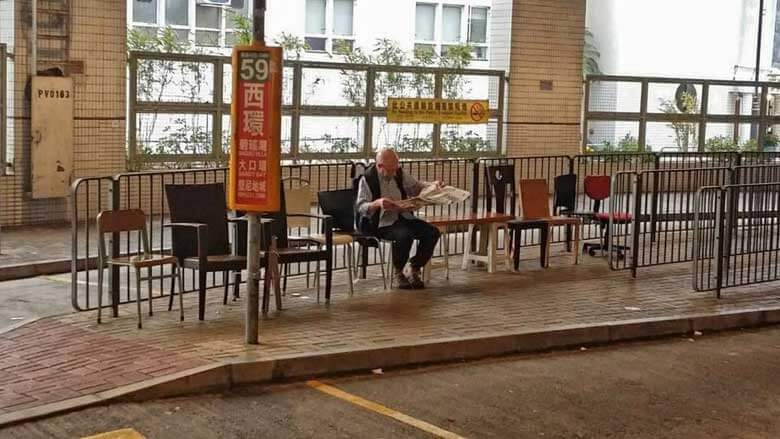05 Jun Give Me a Break, Toronto
It is hard to find a seat in Toronto.
I’m not referring to the TTC at rush hour or a hip restaurant on a Friday night, but rather the sad state of public seating in our city.
Last fall, the City removed all the seating from Trinity Square after complaints about loitering. For this same reason, Toronto’s streets remain largely devoid of public seating. Take College Street for example, which spans 4.8 km between Yonge Street and Lansdowne Avenue. I counted nine public benches on both the north and south sides of the sidewalk.
That’s right: nine.
If you’re walking down one side of the street, you’ll encounter just one bench per kilometre. And that’s on one of Toronto’s busiest commercial arteries.
Public benches are one of the most basic elements of street furniture, yet Torontonians are deprived of it for fear that benches encourage loitering. Loitering by definition means “to linger aimlessly.” If City officials are serious about creating a lively and people-oriented public realm, the ability to linger aimlessly should be central to that vision. Seating, as simple is it is, can help achieve that.
Public seating is cheap and easily implementable. Public seating is about accessibility and inclusivity, because it:
- Provides people, young and old, with necessary resting places
- Signals to people that they are welcome in a space, and
- Provides a comfortable place to observe the magnificent “street ballet” for free, because not everyone can afford to sit on a restaurant patio.

Photo from Hong Kong’s #missingseats campaign
Responses to lack of public seating in other cities have been both bottomup (see Hong Kong’s #missingseats campaign) and topdown (see New York City’s CityBench program). In Toronto, the public can request for any type of street furniture through 311, including street benches. It’s easy to do and your tired legs will thank you for it.



